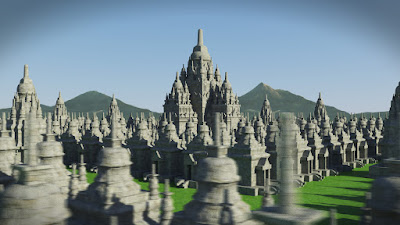Sewu Temple or Manjusrighra is a Buddhist temple built in the 8th century just eight hundred meters to the north of Prambanan Temple. Sewu Temple is the second largest Buddhist temple complex after Borobudur Temple in Central Java. Sewu temple is older than Borobudur and Prambanan Temple. Although the original has 249 temples, by the local community this temple is called "Sewu" which means one thousand in Javanese. This naming is based on the legend of Loro Jonggrang.
Administratively, the Sewu Temple complex is located in Dukuh Bener, Bugisan Village, Prambanan Sub-district, Klaten District, Central Java Province.
This temple was badly damaged by the earthquake in May 2006 in Yogyakarta and southern Central Java. Damage to the structure of the building is very real and the main temple suffered the most severe damage. Fractional rocks scattered on the ground, cracks and fractures between stone connections visible.
Administratively, the Sewu Temple complex is located in Dukuh Bener, Bugisan Village, Prambanan Sub-district, Klaten District, Central Java Province.
This temple was badly damaged by the earthquake in May 2006 in Yogyakarta and southern Central Java. Damage to the structure of the building is very real and the main temple suffered the most severe damage. Fractional rocks scattered on the ground, cracks and fractures between stone connections visible.
To prevent the collapse of the building, an iron frame is installed in all four corners of the building to support and retain the body of the main temple. Although the site reopened for visitors a few weeks later after the earthquake in 2006, all parts of the main temple remained closed and should not be entered for security reasons.
Now that it has been restored, the main temple metal framework has been removed and visitors can enter the room in the main temple.


